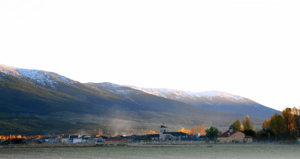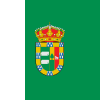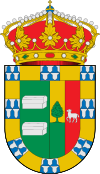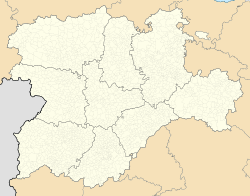Arcones facts for kids
Quick facts for kids
Arcones
|
|||
|---|---|---|---|

Panoramic view of Arcones
|
|||
|
|||
| Country | |||
| Autonomous community | |||
| Province | |||
| Municipality | Arcones | ||
| Area | |||
| • Total | 31.75 km2 (12.26 sq mi) | ||
| Elevation | 1,151 m (3,776 ft) | ||
| Population
(2018)
|
|||
| • Total | 175 | ||
| • Density | 5.512/km2 (14.28/sq mi) | ||
| Time zone | UTC+1 (CET) | ||
| • Summer (DST) | UTC+2 (CEST) | ||
Arcones is a small town, also known as a municipality, located in the province of Segovia in Castile and León, Spain. In 2018, about 175 people lived there. It is a quiet place known for its natural beauty.
Contents
Where is Arcones?
Arcones is found in the central part of Spain. It is part of the Castile and León region. This region is one of Spain's largest.
Location in Segovia
The town is in the province of Segovia. This province is famous for its history. It has many old castles and Roman buildings. Arcones is a bit away from the main city.
How High Up Is It?
Arcones is quite high up in the mountains. It sits at an elevation of 1,151 meters (about 3,776 feet) above sea level. This high location means it often has cooler weather. It also offers great views of the surrounding area.
How Many People Live There?
Arcones is a very small community. In 2018, its population was 175 people. This makes it one of the smaller towns in the province of Segovia.
Population Changes
The number of people living in Arcones has changed over time. In 2004, there were 260 residents. This shows that the population has decreased a bit. Many small towns in Spain have seen similar changes.
What is Arcones Like?
Arcones covers an area of about 31.75 square kilometers. This is roughly 12 square miles. It is a peaceful place with lots of nature.
Natural Surroundings
The town is surrounded by beautiful landscapes. You can see mountains and open fields. It's a great place for outdoor activities. These might include hiking or just enjoying nature.
Time Zone
Arcones follows Central European Time (CET). This means it is one hour ahead of Coordinated Universal Time (UTC+1). During summer, they switch to Central European Summer Time (CEST). This is two hours ahead of UTC (UTC+2).
See also
 In Spanish: Arcones para niños
In Spanish: Arcones para niños 





